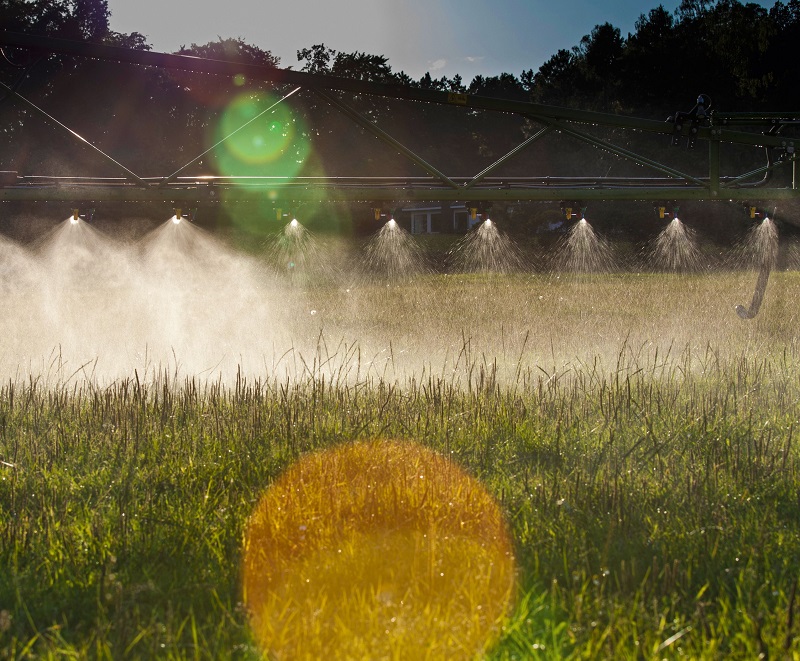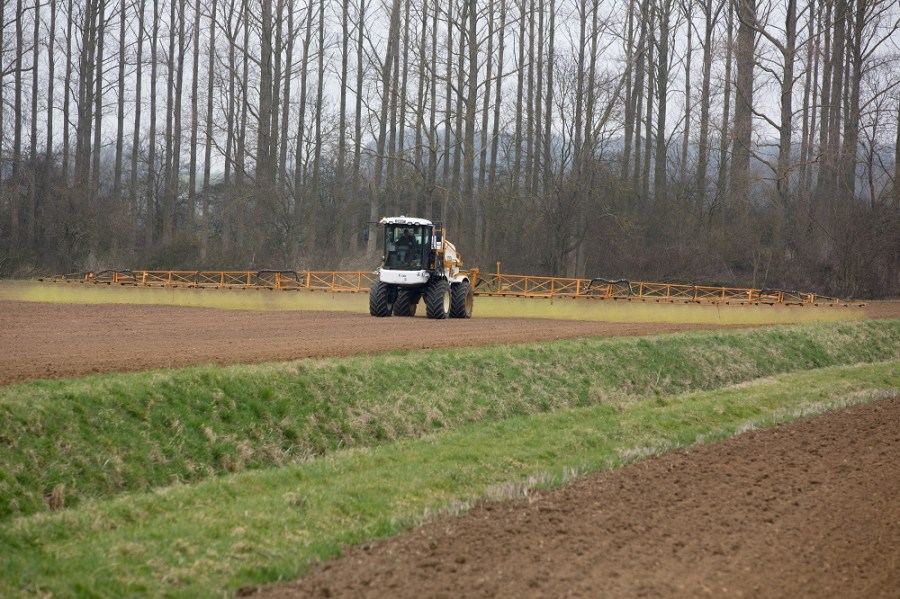Spray buffer zone regulations are getting increasingly complex. CPM asks Bayer’s applications and stewardship coordinator Alice Johnston to explain some of the key points.
Breaching the regulations could result in enforcement action, including prosecution.
By Rob Jones
What are aquatic buffer zones?
Buffer zones are an area of cropped land adjacent to watercourses (including ditches and dry ditches) that cannot be sprayed. They’re designed to protect aquatic organisms, including plants, fish, and insects, from potential toxicity caused by some plant protection products, where a risk has been identified during the approval process.
Many, but not all, products have a minimum buffer zone that must be adhered to when used next to a watercourse. Measured from the top of the bank, distances vary from 1m for dry ditches up to 30m, but in some cases this can be reduced by following certain conditions.
What’s changing?
Since the introduction of buffer zones in the 1990s, the rules have evolved and there are now three main schemes, as outlined below:
- LERAP scheme

Some product labels specify drift-reducing technology must be used.
- Interim scheme
- Drift Reducing Technology (DRT)
There is also a fourth scheme specifically to protect insects and wildlife on uncropped land (see panel on pxx).
Buffer zones have historically been specific to the product rather than the crop, but this is changing and all products are likely to have crop-specific buffer zones in future
LERAP scheme
The Local Environment Risk Assessment for Pesticides was introduced in 1999 and allows for buffer zones to be reduced to as little as 1m when certain technology, such as low drift nozzles, or a lower application rate is used – this only applies to products classed as “category B”.
Operators must complete a LERAP reduction assessment prior to application and keep records for three years. Some products – those in “category A” – aren’t eligible for buffer-zone reduction under LERAP.
The LERAP scheme is likely to be phased out at some point, but timescales are unclear so existing arrangements remain in place for the foreseeable future. The assessment process will probably remain in place once it’s phased out, however.
Interim scheme
This was introduced in late 2011 to help address difficulties getting new products authorised, to aid the re-registration of older chemistry and to give the UK similar flexibility as other EU members. It offers more flexibility than the LERAP scheme by setting crop-specific buffer zones for individual products.

All products are likely to have crop-specific buffer zones in future, says Alice Johnston.
- Drift-reducing technology (DRT)
The size of the buffer required for all approved crops is clearly shown on the label. Buffer zones <5m can be
reduced by following the LERAP reduction assessment process. Those >5m cannot be reduced, however.
The interim scheme is likely to replace LERAP “A” and “B” categories as products come up for re-registration by the Chemicals Regulation Directorate (CRD) and is already on many newly approved products.
Drift-reducing technology (DRT)
This is the most stringent buffer-zone scheme and gives users access to certain products that would have otherwise struggled to gain regulatory approval under the LERAP or interim schemes by making use of the latest low-drift technology.
Crop-specific buffer zones are fixed, regardless of watercourse size or application rate used, so cannot be reduced. The product label specifies three-star low-drift equipment and operating conditions must be used (e.g. 3* nozzles, operating pressure, etc.) up to 30m from any watercourse.
Within that 30m, compulsory no-spray zones of 6, 12 or 18m may also apply, depending on the crop. A list of accredited low drift equipment can be found at www.pesticides.gov.uk
Which scheme applies?
Many product labels still show the older LERAP categories, but newly approved chemicals, including those that have been re-registered, could have either the LERAP, interim or DRT scheme on the label. Only one buffer zone scheme applies to any product and details will be clearly shown on the label.
Because the interim and DRT schemes set crop-specific buffer zones, it’s possible any one product will have several different buffer zones outlined, so check the label carefully before spraying.
What about mixing products?
Whenever tank mixes contain two or more products with different buffer zone rules always abide by the most restrictive label conditions.
The rules are legally binding for the use of most products so breaching the regulations could result in enforcement action, including prosecution, against the operator or employer.
Non-target arthropod buffer zones
This additional scheme aims to protect insects and wildlife in uncropped land, such as permanent grass margins, field boundaries and hedgerows. It’s product-specific and the zones are non-reducible and measured from the edge of the cropped land.
Temporary stewardship margins (e.g. wild flower mix) are classed as ‘cropped land’ so could count towards the arthropod buffer zone. Precautions should be taken to reduce drift onto margins, though.
Details are explained in the “Directions for use” section of the product label. Arthropod buffers are advisory for some products but compulsory conditions of use for others, so check the label carefully.




